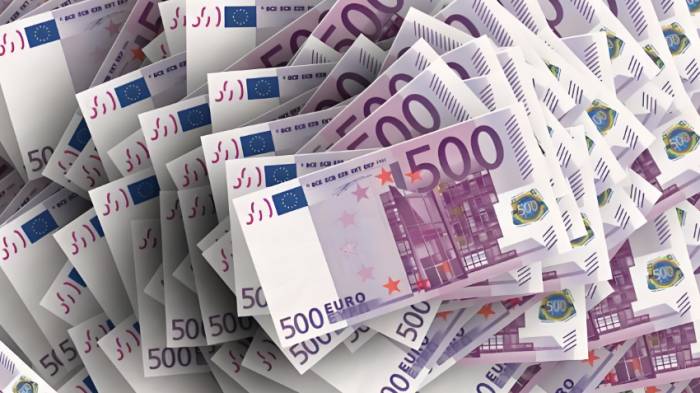ECB Has Strong Reasons to Cut Rates in December
In a significant commentary on the European economy, François Villeroy de Galhau, a member of the European Central Bank's (ECB) governing council and the head of the French central bank, has indicated a shift in monetary policy that could signal an easing of restrictions on credit. In a recent statement, he suggested that the time may have come for the ECB to consider lowering interest rates to levels that actively promote growth.
Villeroy's assessment comes against a backdrop of fluctuating economic indicators and ongoing uncertainties. He remarked that it is still premature to pin down the specific levels at which borrowing costs will stabilize. However, he emphasized that there is considerable scope for relaxation of current economic policies before borrowing costs begin to impede output. He expressed a high degree of confidence that the ECB will likely implement another rate cut in December, and urged officials to keep all options on the table regarding the pace and extent of any adjustments going forward.
In his commentary, Villeroy emphasized a critical point: "In the near future, inflation should be able to maintain itself at the target level of 2%, and given the bleak growth prospects in Europe, I see no reason to keep our monetary policy restrictive." This acknowledgment of the fragile state of Europe's economic landscape draws attention to the necessity of supportive measures, especially if economic growth continues to falter and inflation risks falling below target levels.
The financial markets have reacted to Villeroy's comments with heightened expectations that the ECB will ease monetary policy in 2024. Traders are placing increased bets on the ECB cutting rates, with projections now floating around a total of approximately 150 basis points in reductions compared to previous days. Notably, the yield on Germany's 10-year government bonds dipped to 2.13%, marking its lowest point since early October, while French and Italian bonds have seen improvements.
Advertisement
There is considerable debate within the ranks of ECB officials about how far rates should be lowered from the current 3.25% level. Recent business surveys that reveal a deterioration in the economic growth outlook, combined with signs that inflation is drifting closer to the 2% target sooner than previously anticipated, have intensified discussions about potential reductions. Even among the more hawkish members of the ECB, there seems to be a consensus that bringing rates down to a neutral level—an often theoretical benchmark difficult to measure in real time—may be necessary.
Nonetheless, there remain diverging perspectives among ECB policymakers. Isabel Schnabel, a member of the Executive Board, has cautioned against overstepping, warning that if weak economic growth stems from structural issues, then easing policies may not yield the desired outcomes. Conversely, Fabio Panetta, the Governor of the Bank of Italy, recently advocated for rate cuts that would ensure economic growth is no longer constrained.
Schnabel posited that the neutral interest rate could be as high as 3%, citing various factors that could keep inflation rates above pre-pandemic levels. Villeroy reiterated the French central bank's estimates, placing the neutral rate between 2% and 2.5%.
Across the board, investors and economists largely predict that the ECB will implement another rate cut at its last meeting of 2024. While markets are generally anticipating a 25-basis-point decrease, some investors believe that the increasingly weak economic data could push the policymakers to approach the situation with a broader scope, possibly doubling the cut size.
Villeroy outright stated, "At this point, there is every reason to cut rates on December 12." He emphasized the importance of remaining flexible with any future cuts, noting that upcoming data, economic forecasts, and risk assessments should play a vital role in shaping decisions moving forward.
The disclosure of economic data on Friday could potentially reveal that inflation in the eurozone increased to 2.3% in November. Despite such trends, the price growth for the quarter is expected to fall short of the ECB’s previous economic forecasts. Villeroy is optimistic that the target of 2% inflation might be achievable by early 2025.
Additionally, the prospect of negative interest rates has not been ruled out by Villeroy. He suggested that with the most severe phases of inflation seemingly behind Europe, policymakers should contemplate adopting communication strategies that provide clearer directions on policy shifts.

“As we return to a more 'normal' inflation mechanism, our communication may become more 'forward-looking.' Therefore, soft signals may now become our appropriate mode of communication," he stated.
As officials continue to reassess existing strategies, there is also an ongoing discussion about the benefits of various economic tools at their disposal. Villeroy pointed out: “As we move beyond the phase of high inflation, some may deem unconventional tools unnecessary or counterproductive. However, that is not the case,” reiterating that these policy instruments must be fine-tuned rather than questioned.
Lastly, he urged policymakers not to discount the use of negative interest rates in the future. He concluded by stating: “Overall, negative rates should remain in our toolbox but should be reserved for exceptional circumstances. Therefore, we must take robust action to avoid falling into negative rate territory, as we cannot tolerate a prolonged period of low inflation.”
Post Comment